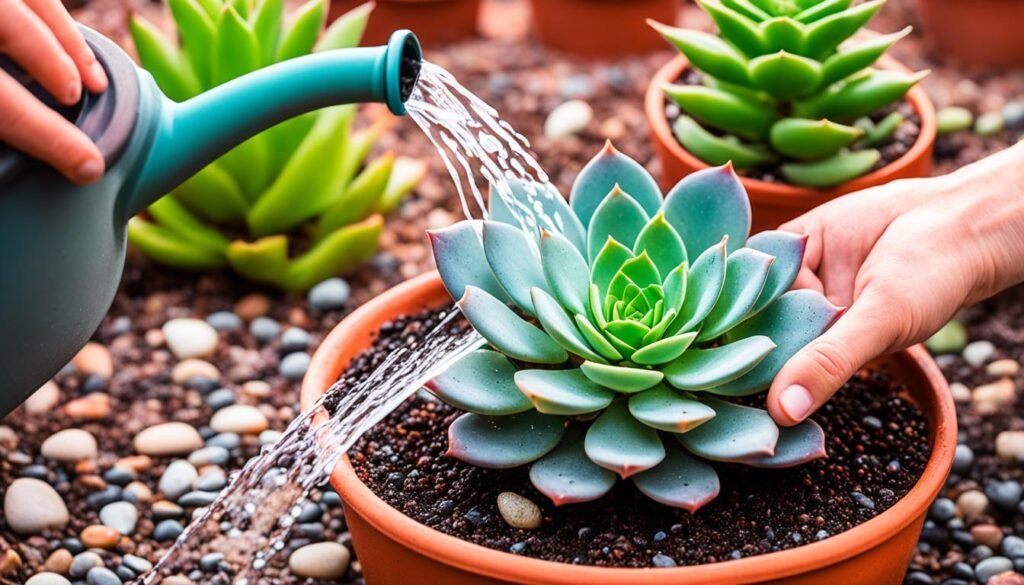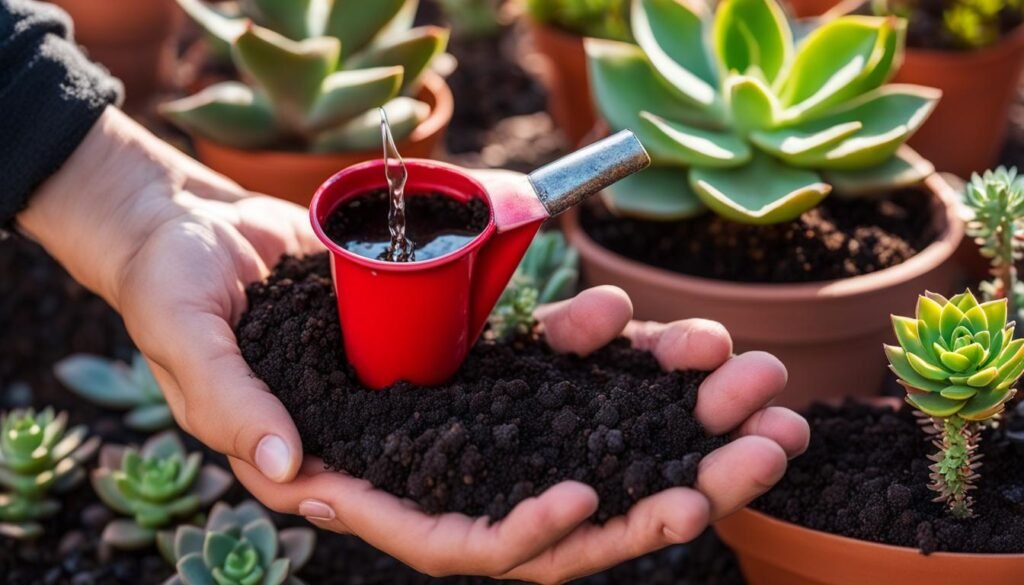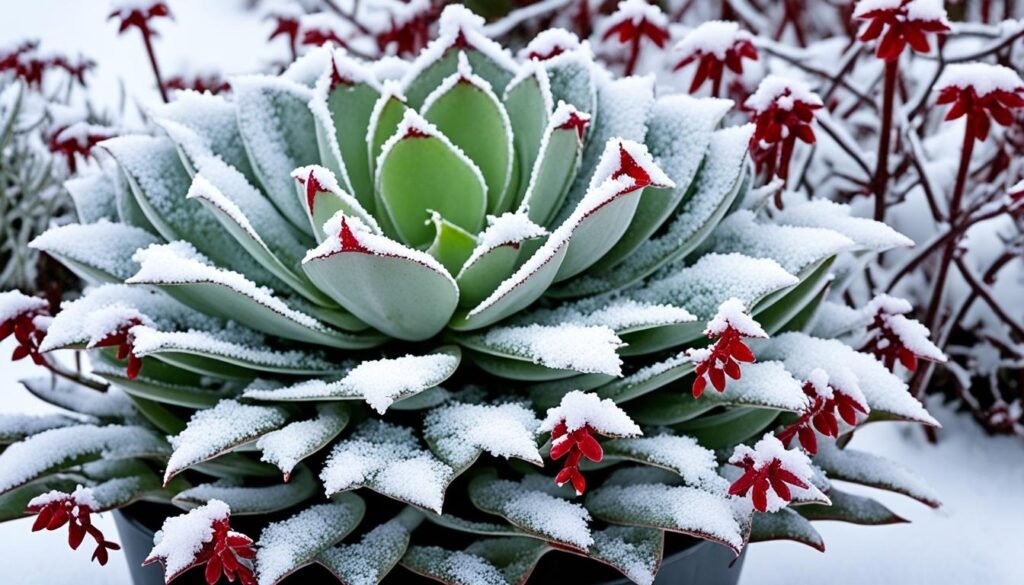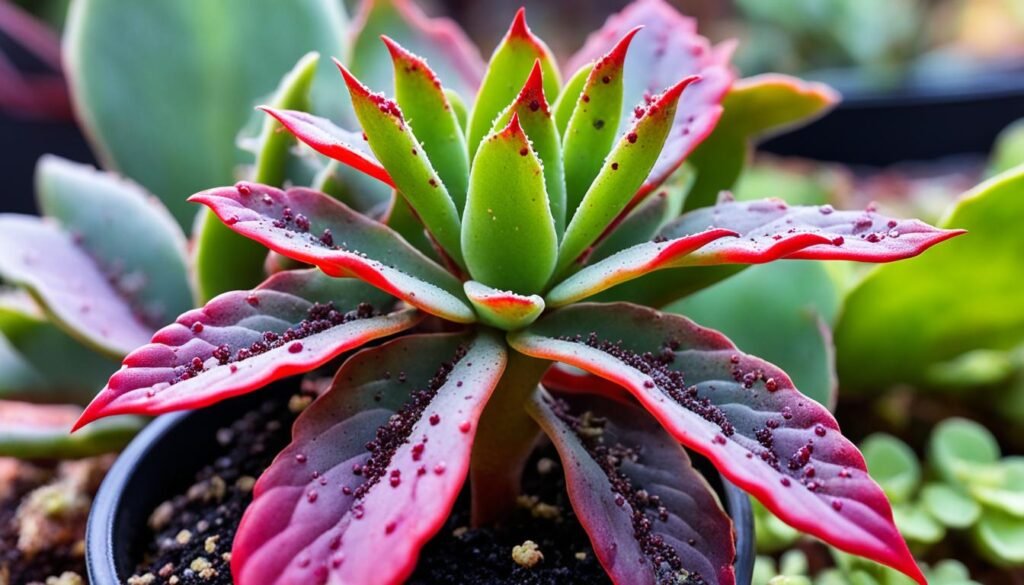Hi there! My name is Rachel, and I have always loved filling my home with beautiful, green plants. They not only add a touch of nature to my living space but also provide a calming ambiance. Recently, I came across a stunning red vine succulent at a local plant nursery, and I couldn’t resist bringing it home.
When I first brought the red vine succulent home, I was captivated by its vibrant red color and unique trailing growth. It instantly became the centerpiece of my indoor plant collection. However, I soon realized that caring for this gorgeous plant required special attention. I wanted to ensure its health and longevity, so I delved into learning the best tips and tricks for red vine succulent care.
In this article, I will share with you the essential tips and tricks I discovered to care for red vine succulents. Whether you’re a seasoned plant parent or new to the world of indoor gardening, these guidelines will help you keep your red vine succulent thriving and looking its best.
Key Takeaways:
- Red vine succulents are known for their vibrant red color and unique trailing growth habit.
- Proper watering, potting soil, sunlight, and fertilization are crucial for red vine succulent care.
- They require bright, indirect sunlight and well-drained soil suited for succulents.
- Water sparingly, allowing the soil to dry out completely between waterings.
- During the winter months, red vine succulents go dormant and require less water and sunlight.
Understanding Red Vine Succulents
Red vine succulents are a fascinating variety of succulent plants that possess fleshy leaves and stems, specifically designed to store water. These plants have adapted well to arid climates and can thrive in harsh soil conditions. One of the distinctive features of red vine succulents is their trailing growth habit, with their stems and leaves cascading down from their containers. These succulents can be found in various plant families around the world, offering a wide range of varieties to choose from.
Red vine succulents are known for their unique and eye-catching appearance, making them popular choices for indoor gardens and plant enthusiasts. Their trailing growth gives them a delicate and graceful charm, adding elegance to any space. Whether suspended in hanging baskets or trailing along shelves and walls, red vine succulents bring a touch of natural beauty to any environment.
Succulents, in general, are beloved for their low maintenance and water-saving capabilities. Red vine succulents are no exception. These plants have evolved to thrive in dry conditions, storing water in their leaves and stems to sustain themselves during periods of drought. Their ability to survive in tough soil conditions further adds to their resilience and makes them an ideal choice for both beginner and experienced plant enthusiasts.
“Red vine succulents are nature’s adaptable marvels, conquering arid climates and bringing beauty wherever they grow. Their trailing growth habit adds a touch of elegance to any space.”
When it comes to care, red vine succulents require similar treatment to other succulent plants. They prefer well-draining soil and should only be watered sparingly. Overwatering can be detrimental to these plants, leading to root rot and other water-related issues. Finding the right balance between providing enough water and allowing the soil to dry out is crucial for their overall health and thriving growth.
Understanding the unique characteristics of red vine succulents and their specific care requirements allows plant enthusiasts to enjoy the beauty and allure they bring to indoor gardens and living spaces.
Watering Red Vine Succulents
When it comes to succulent care, watering is a critical aspect that requires special attention, especially for red vine succulents. These stunning plants have low water requirements and overwatering is a common mistake that can harm their health. It’s essential to understand the right watering techniques to ensure the optimal growth and beauty of your red vine succulent.
To water your red vine succulent, it’s crucial to wait until the soil or planting medium is completely dry. You can determine this by checking the moisture level at least an inch below the surface. Once the soil is dry, it’s safe to proceed with watering.
A great method to water your red vine succulent is by using the bottom-up approach. This involves placing the planter on a saucer filled with shallow water and allowing the water to be absorbed into the soil through the drainage holes. This way, the plant can take up the water it needs without risking overwatering.
Overwatering can have detrimental effects on your red vine succulent. It can lead to root rot, yellowing leaves, and mushy foliage. Therefore, it’s crucial to avoid excessive watering and give your plant the chance to dry out between watering sessions.
On the other hand, underwatering is also a concern. When red vine succulents lack sufficient water, their leaves may become shriveled and droopy. It’s important to find the right balance and provide the appropriate amount of water to keep your red vine succulent thriving.
Watering Tips for Red Vine Succulents:
- Check the moisture level of the soil before watering. Ensure it’s completely dry.
- Use the bottom-up watering method by placing the planter on a saucer filled with shallow water.
- Allow the water to be absorbed through the drainage holes and into the soil.
- Avoid overwatering to prevent root rot and other water-related issues.
- Keep an eye out for signs of underwatering, such as shriveled and droopy leaves.
Remember, proper watering is crucial for the overall well-being of your red vine succulent. By following these watering tips, you can ensure that your plant receives the right amount of water and thrives in all its vibrant red beauty.

Choosing the Right Pot and Soil
When it comes to caring for your red vine succulent, choosing the right pot and soil is crucial. Proper pot selection and a well-drained soil mix can ensure the health and vitality of your plant.
First and foremost, it’s important to select a pot that has drainage holes. These holes allow excess water to escape, preventing water from pooling at the bottom and potentially causing root rot. Terra-cotta pots and ceramic pots are excellent options as they provide better drainage compared to plastic or glass containers.
Next, consider the potting soil for your red vine succulent. It’s essential to use a well-drained soil mix specifically formulated for succulents and cacti. Regular potting soil often retains too much moisture, which can be detrimental to the plant’s health. Look for a soil mix that promotes good drainage to prevent waterlogged roots.
Increase drainage in the potting soil by adding sand or perlite. These additives enhance soil structure, allowing excess water to drain away more effectively. Sand provides better drainage, while perlite improves aeration, preventing soil compaction and promoting root health.
Remember, a suitable pot and well-drained soil are key to maintaining optimal growing conditions for your red vine succulent. Ensuring proper drainage helps prevent water-related issues and promotes healthy root development.
Expert Tip:
When replanting or repotting your red vine succulent, gently loosen the old soil around the roots before transferring it to the new pot. This allows the roots to establish themselves in the fresh soil more easily.
| Benefits of Choosing the Right Pot and Soil | Consequences of Poor Pot and Soil Selection |
|---|---|
|
|
Sunlight Requirements for Red Vine Succulents
Red vine succulents need adequate sunlight to thrive and maintain their vibrant color. Providing the right amount of sunlight is essential for their health and growth. Let’s explore the sunlight requirements for red vine succulents and how to ensure they receive optimal light.
Red vine succulents thrive in bright, indirect sunlight. They require at least 6-8 hours of full sun a day to maintain their vibrant foliage. Placing them near a south-facing window indoors or in a spot with morning sun and afternoon shade outdoors is ideal. This allows them to get the necessary sunlight while avoiding the intense afternoon heat. The red vine succulent’s trailing stems and leaves beautifully cascade down, creating an eye-catching display when placed in an area with ample sunlight.
However, it’s important to protect red vine succulents from intense direct sunlight. Exposure to intense sunlight can cause sunburn and damage the leaves. To prevent this, it is crucial to find the right balance between light and shade. This can be achieved by positioning the plants in a location where they receive bright, indirect sunlight for several hours a day, while also providing them with a break from direct sunlight during the hottest part of the day.
Remember, every indoor and outdoor environment is different, so the specific lighting conditions may vary. You can determine if your red vine succulent is receiving the right amount of sunlight by observing its overall health and appearance. If the leaves start to bleach or turn yellow, it indicates that the plant is getting too much direct sunlight and needs to be moved to a slightly shadier location. On the other hand, if the stems become elongated and the leaves appear stretched, it suggests that the plant is not receiving enough sunlight and needs to be placed in a brighter spot.
Finding the perfect balance between light and shade is key to maintaining the health and beauty of your red vine succulents. By providing them with the recommended amount of sunlight and monitoring their response, you will ensure their optimal growth and stunning visual appeal.

| Sunlight Requirements for Red Vine Succulents | Conditions |
|---|---|
| Bright, Indirect Sunlight | 6-8 hours of full sun a day |
| Placement Indoor | Near a south-facing window |
| Placement Outdoor | Morning sun and afternoon shade |
| Sunburn Prevention | Avoid exposing them to intense sunlight |
Fertilizing Red Vine Succulents
Proper fertilization is essential for the health and growth of red vine succulents. Although these plants have low nutrient requirements, they still benefit from occasional fertilization to ensure optimal vitality. By providing the right balance of nutrients, you can enhance their overall appearance and promote robust growth.
When fertilizing red vine succulents, it’s crucial to choose a balanced organic fertilizer. This type of fertilizer contains a mix of essential nutrients, including nitrogen, phosphorous, and potassium, which are necessary for overall plant health. Dilute the organic fertilizer to half strength, as succulents are sensitive to high concentrations of nutrients.

It’s important to apply fertilizer during the active growing season, typically from spring to fall. Avoid fertilizing during the winter months, as most succulents, including red vine varieties, go dormant during this time. During dormancy, the plant’s metabolic processes slow down, and excessive fertilization can harm the plant’s health.
When applying the fertilizer, follow the instructions on the label to ensure proper application. Overfertilizing can lead to excessive growth, weak stems, and damage to the plant. Remember that red vine succulents are adapted to nutrient-poor environments, so a cautious approach to fertilization is recommended.
Benefits of Fertilizing Red Vine Succulents
Fertilizing red vine succulents offers several benefits:
- Improved growth: The balanced nutrients in organic fertilizers promote healthy growth and vibrant foliage.
- Enhanced color: Fertilizers can intensify the red coloration in red vine succulents.
- Strengthened stems: Adequate nutrition helps develop strong and sturdy stems, supporting the trailing growth habit.
Remember that fertilization should complement proper watering, sunlight exposure, and well-drained soil. By providing the right combination of care, you can maintain the longevity and beauty of your red vine succulents.
| Key Points | Details |
|---|---|
| Fertilizer Type | Choose a balanced organic fertilizer diluted to half strength. |
| Fertilizing Schedule | Apply fertilizer during the active growing season (spring to fall). Avoid fertilizing during winter dormancy. |
| Application Instructions | Follow the instructions on the fertilizer label for proper application. |
| Benefits | Improved growth, enhanced color, and strengthened stems. |
Winter Care for Red Vine Succulents
During the winter months, red vine succulents enter a dormant period where their growth slows down. It’s essential to adjust their care routine to ensure their survival through the colder season. Here are some important guidelines for winter care:
Watering
Red vine succulents require less water during the dormant period. It’s important to water them sparingly, allowing the soil to dry out completely between waterings. Overwatering can lead to root rot and other issues. Only give your red vine succulents enough water to prevent the soil from becoming completely dry.
Sunlight
While red vine succulents still need some sunlight during winter, it’s crucial to protect them from intense sunlight and cold drafts. Place them in a well-lit area that receives indirect sunlight for a few hours each day. Be cautious not to expose them to freezing temperatures.
Protection from Frost
Red vine succulents are not frost-tolerant, so it’s vital to shield them from freezing temperatures. If you keep your succulents outdoors, bring them indoors once temperatures drop below freezing. Alternatively, you can provide them with shelter using a greenhouse or a covered patio.
No Fertilization
During the dormant period, red vine succulents do not need additional nutrients. Refrain from fertilizing them in winter, as it can disrupt their natural growth cycle. Resume fertilization in spring when the active growing season begins.
Avoidance of Excessive Moisture
Ensure that your red vine succulents are not exposed to excessive moisture during winter. Condensation build-up can cause rot and other damage. Opt for well-draining soil and avoid using trays or saucers underneath the pots to prevent water retention.
By following these winter care tips, your red vine succulents will maintain their health and be ready for vigorous growth when the dormant period ends.

Propagating Red Vine Succulents
Propagating red vine succulents is a rewarding way to expand your collection of these beautiful plants. With a few simple techniques, you can easily produce new plants from cuttings and enjoy the beauty of red vine succulents in multiple locations.
To propagate a red vine succulent, start by carefully selecting a healthy stem or leaf from the parent plant. Using a clean, sharp knife or scissors, make a clean cut just below a leaf node. This node is where the new roots will develop.

After you’ve taken the cutting, set it aside in a cool, dry place for a few days to allow the cut end to callus over. This helps prevent rot and promotes the formation of new roots.
Once the cut end has formed a callus, it’s time to plant the cutting. Choose a well-drained soil mix specifically formulated for succulents and cacti. You can also create your own mix by combining equal parts of potting soil, perlite, and sand. Fill a small pot or tray with the soil mix, making sure it’s moist but not soggy.
Gently insert the calloused end of the cutting into the soil, burying it about an inch deep. Lightly press the soil around the cutting to ensure good contact and stability.
Place the pot or tray in a warm and bright location, but avoid direct sunlight, as it can scorch the tender cutting. Ideally, provide the cutting with bright, indirect light for several hours a day.
Water the cutting sparingly, allowing the soil to dry out slightly between waterings. Overwatering can cause the cutting to rot, so it’s important to strike a balance and not keep the soil constantly wet.
With proper care and patience, the cutting will develop roots over a period of several weeks. Once you see new roots forming, it’s a sign that the cutting has successfully taken root.
This simple propagation technique offers several benefits:
- You can easily create new plants from your existing red vine succulents without spending money on new ones.
- Propagation allows you to share your love of red vine succulents with friends and family by giving them newly propagated plants as gifts.
- By propagating red vine succulents, you can experiment with different varieties and colors, expanding the diversity of your collection.
Enjoy the process of propagating red vine succulents and watch as your cuttings become thriving new plants. It’s a rewarding experience that allows you to nurture and appreciate the beauty of these unique succulents.
Common Pests and Diseases of Red Vine Succulents
Although red vine succulents are generally resistant to pests and diseases, they are still susceptible to common garden pests that can affect their health and growth. It is important to regularly check your red vine succulents for any signs of infestation and take appropriate measures to control these pests.
Aphids: These tiny insects often cluster on the underside of leaves and feed on plant sap. They can cause curling, yellowing, and distortion of leaves. To control aphids, you can use organic insecticidal soap or a strong blast of water to dislodge them. Inspect your plant regularly and take prompt action if aphids are detected.
Spider Mites: These pests are commonly found in dry environments and can result in leaf stippling, discoloration, and webbing. To combat spider mites, regularly mist your red vine succulent to increase humidity and wipe the leaves with a damp cloth. In severe cases, you may need to use organic miticides or insecticidal soap.
Mealybugs: Mealybugs are soft-bodied insects that form white, cotton-like clusters on leaves and stems. They drain sap from the plant and can cause stunted growth and yellowing. To treat mealybugs, dab them with cotton swabs soaked in rubbing alcohol or use a mixture of water and mild dish soap to wipe them off. Repeat as necessary.
Proper sanitation and good growing conditions can help prevent pest and disease problems. Regularly inspect your red vine succulents, especially the undersides of leaves, for any signs of pests. Early detection and intervention are key to maintaining the health and beauty of your plants.
Conclusion
Caring for red vine succulents requires attention to watering, potting soil, sunlight, and fertilization. By following these essential tips and tricks, you can ensure the vibrant growth and allure of your red vine succulents. Remember to provide them with the right amount of water, light, and nutrients, and protect them during the winter months. With proper care, your red vine succulents will thrive and add a unique touch to your plant decor.
